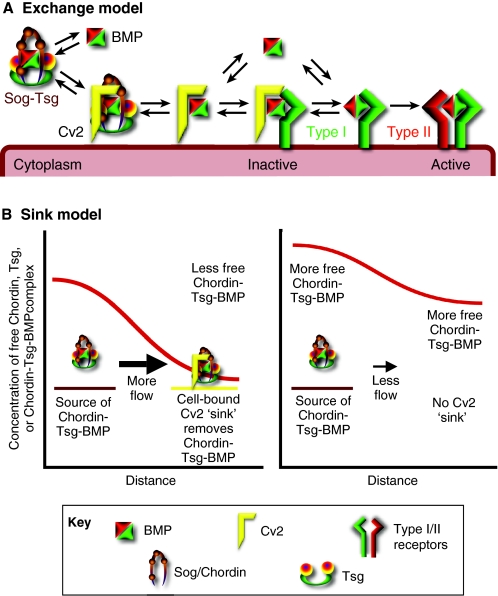Fig. 4.
Models of Cv2 activity. (A) The exchange model of Cv2 activity, in which binding between Cv2 and type I BMP receptors either increases the flow of BMPs to the receptors or sequesters BMPs in inactive complexes. The model also hypothesizes a similar exchange of BMPs between Cv2 and Chordin/Sog, mediated by binding between Cv2 and a Chordin/Sog-Tsg complex, which could increase the release of BMPs from Chordin/Sog, increasing the levels of Cv2-bound BMPs available for exchange with the BMP receptors. (B) The sink model of Cv2 activity. (Left) Cv2 is expressed at a distance from the region of BMP, Chordin/Sog and Tsg production. By binding Chordin/Sog, Tsg or a Chordin-Tsg-BMP complex (as shown), Cv2 locally reduces the concentration of free Chordin/Sog, Tsg or Chordin-Tsg-BMP complex. This will also result in an increase in the flow of the Cv2-binding proteins towards Cv2-expressing cells. (Right) In the absence of Cv2, the levels of free Cv2-binding proteins rise in both nearby and distant tissues, and, after levels reach an equilibrium, the net flow of the Cv2-binding proteins away from their region of production is reduced. BMP, bone morphogenetic protein; Cv2 (Crossveinless 2; BMPER); Sog, Short gastrulation; Tsg, Twisted gastrulation.

